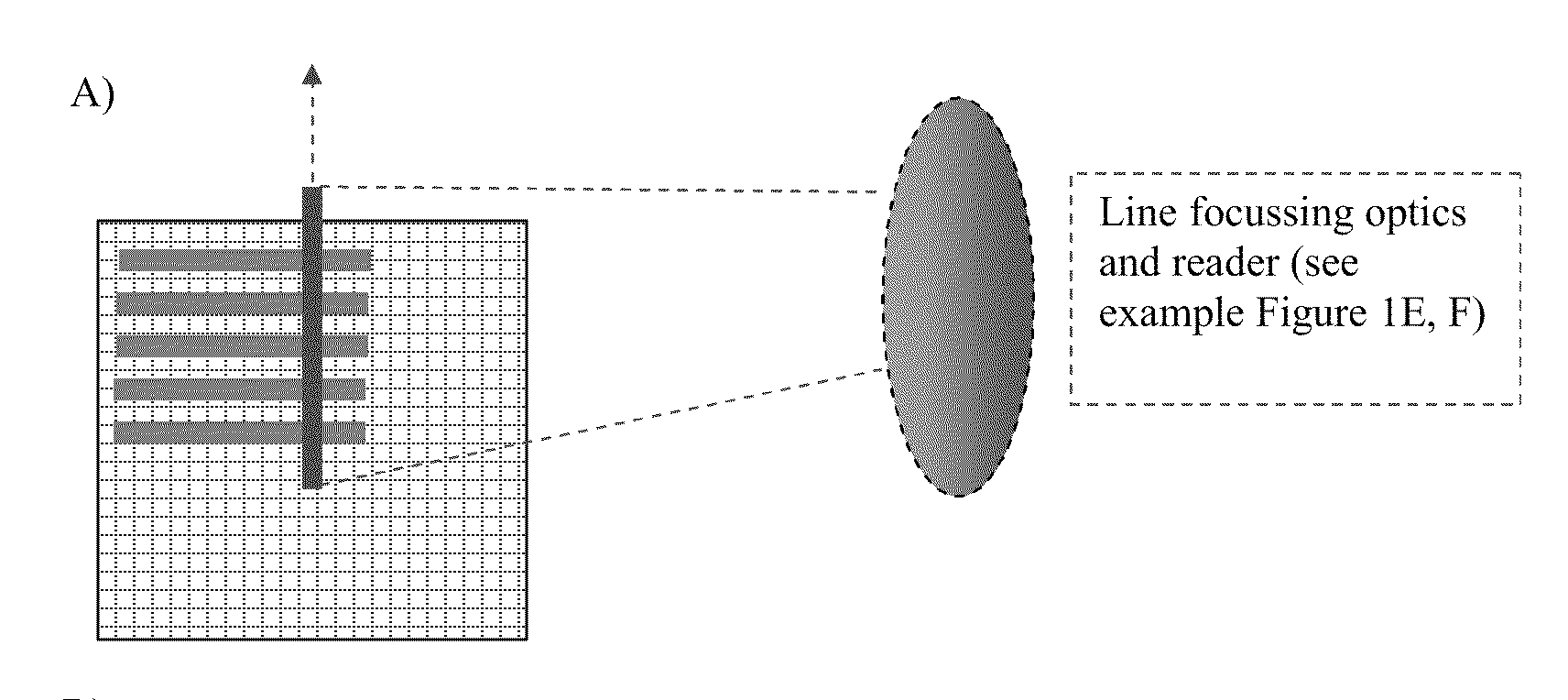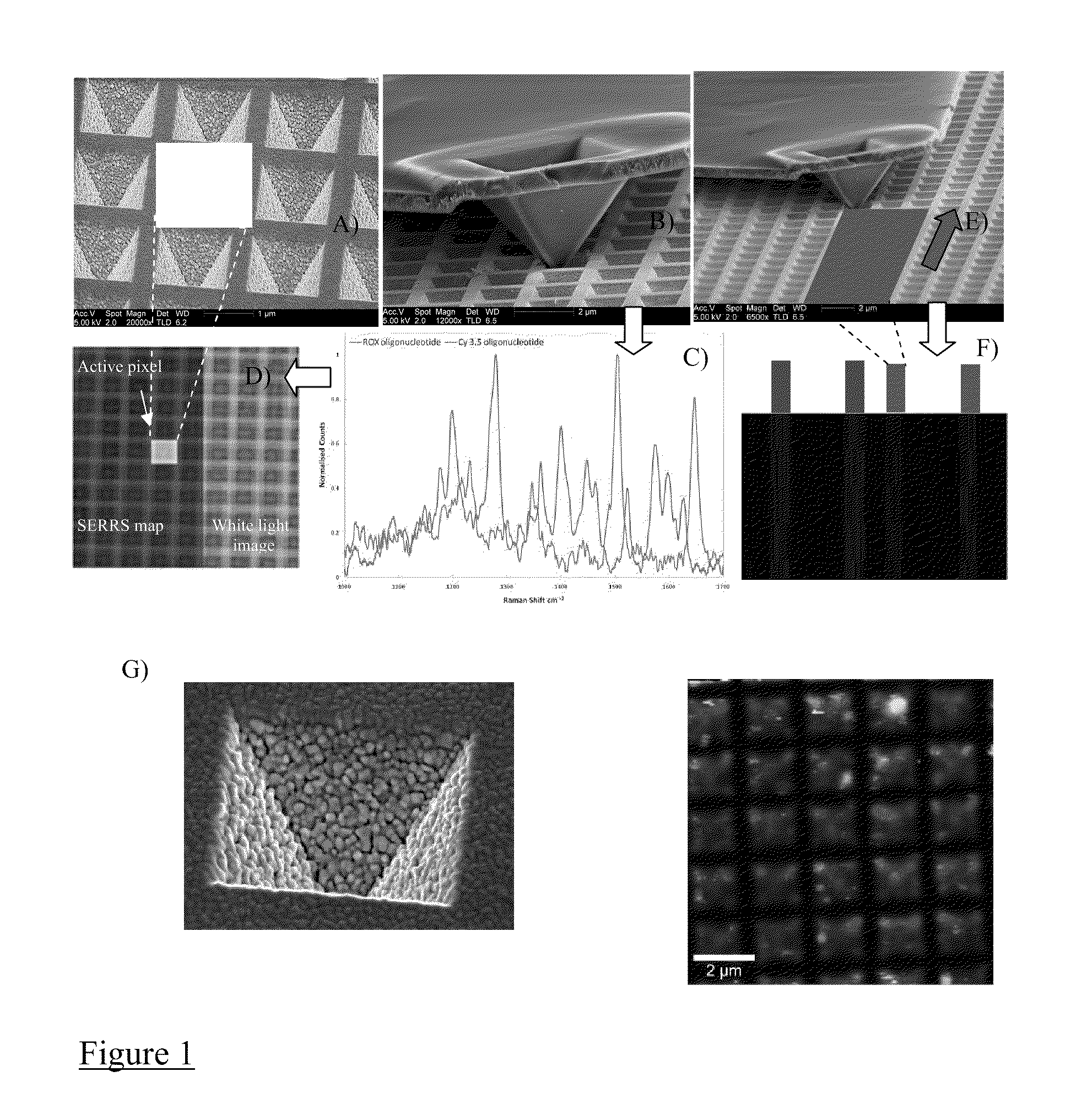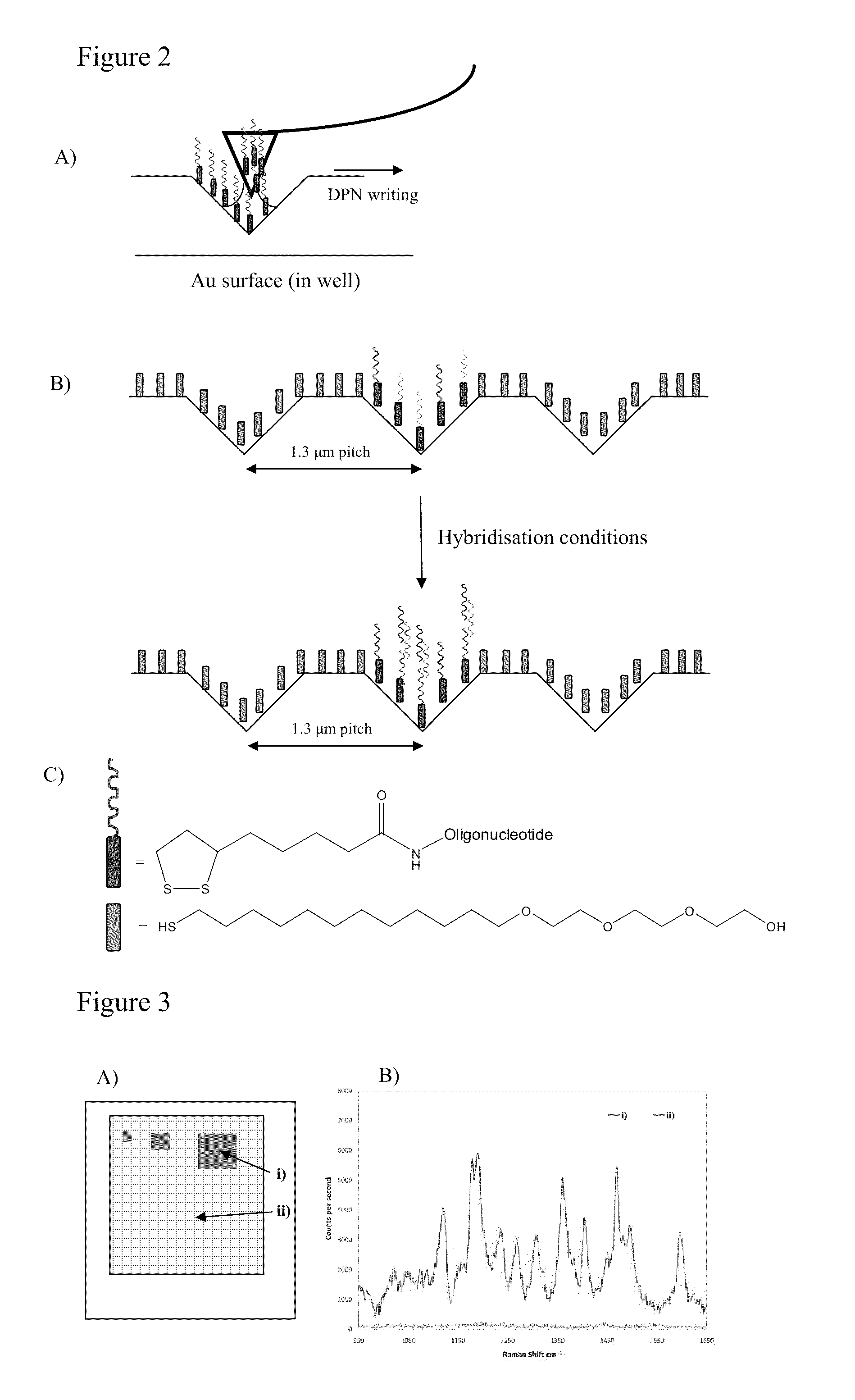Novel detection system
a detection system and nano-array technology, applied in the field of nano-array making methods, can solve the problems of difficult imaging and detection of single monolayers of materials or analytes at a flat surface, limited imaging and detection quality, and only effective imaging
- Summary
- Abstract
- Description
- Claims
- Application Information
AI Technical Summary
Benefits of technology
Problems solved by technology
Method used
Image
Examples
Embodiment Construction
[0044]The inventors show that DPN can be performed accurately in single plasmonic microwells. Furthermore, they have shown that the SE(R)RS readout of these single microwell array dots can be read in isolation by fast line scanning (see FIGS. 1B, C and D) or excited remotely from a point close to but not exactly on the collection point (when collecting in a confocal or semi-confocal set-up.)
[0045]The inventors also show that it is possible to write lines of material onto non-flat nanostructured surfaces using suitable cantilevers and methods.
1) DPN SERS Array Fabrication:
[0046]The lithography method differs according to the type of SE(R)RS surface used. For example, nanostructured gold surfaces of the type detailed by Perney and co-workers[13] (and shown in FIG. 1A) rely on a inverse pyramid structure with topography and spatial features on the microscale (˜1.3 μm pitch). This design feature is necessary to create surface plasmon resonances and areas of strong electric field (necess...
PUM
 Login to View More
Login to View More Abstract
Description
Claims
Application Information
 Login to View More
Login to View More - R&D
- Intellectual Property
- Life Sciences
- Materials
- Tech Scout
- Unparalleled Data Quality
- Higher Quality Content
- 60% Fewer Hallucinations
Browse by: Latest US Patents, China's latest patents, Technical Efficacy Thesaurus, Application Domain, Technology Topic, Popular Technical Reports.
© 2025 PatSnap. All rights reserved.Legal|Privacy policy|Modern Slavery Act Transparency Statement|Sitemap|About US| Contact US: help@patsnap.com



